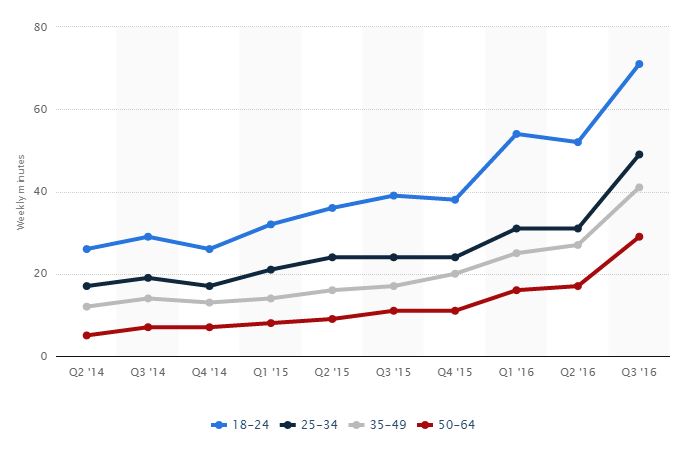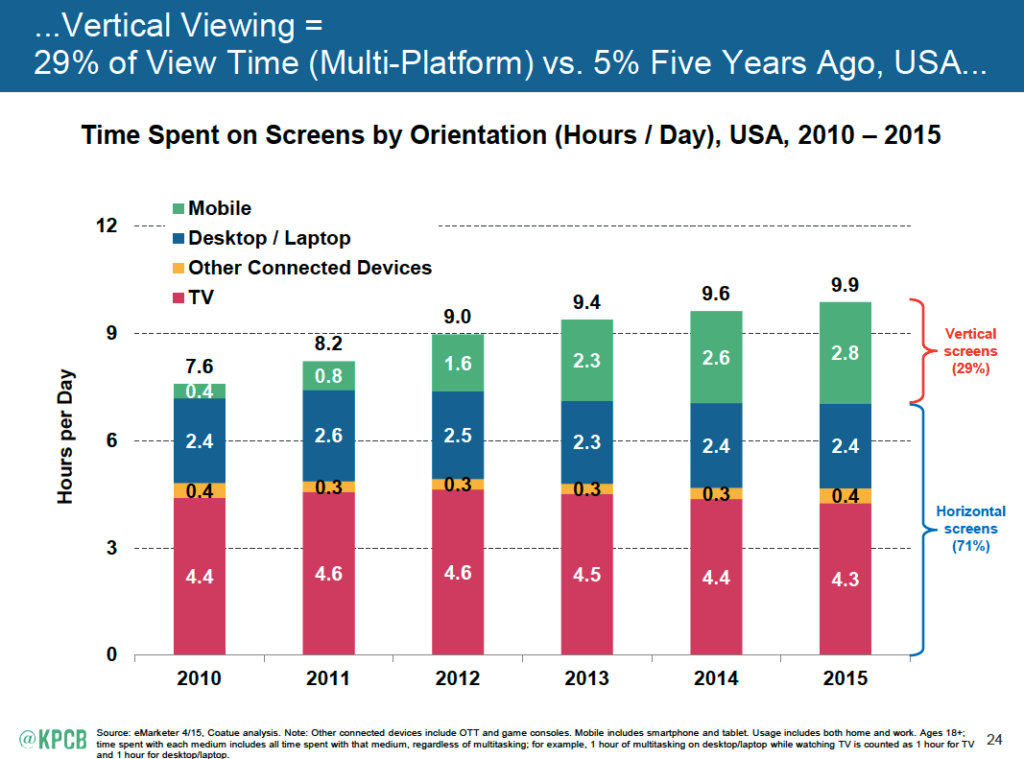A Simple Simple Short Shot
Vertical Video: Get It In Your Social Media Marketing Strategy
Big and small brands need to start including vertical in their social media campaigns, it’s here to stay - especially on mobile
Video calls on cell phones are no longer a phenomenon of the future. Apple FaceTime launched in 2010, Facebook originally launched with integrated Skype for video calling in Messenger in 2011 before releasing their own independant video calling in 2015. Google Duo and WhatsApp jumped on board video calling in 2016. While most of these were available on desktop, the rise of smartphones has changed the video game.
Remember when we all used to rotate our phones a gajillion times a day? It almost evoked a second coming of the carpal tunnel generation, but phones (and screens) have come a long way. The average screen size has doubled since 2007 and the average internet speed has tripled since 2011 making phones a viable place to watch videos on a regular basis.
“WE’RE IN THE ERA OF DIGITAL VIDEO AND IT’S A MESS” – STEVE JOBS, 2011.
Snapchat introduced video snaps in December of 2012 in vertical form, while Instagram added square videos to their vertical-only app in June of 2013. Meerkat and Periscope both launched on March 26th, 2015 and neither had the option of going horizontal, truly signalling the end of the landscape domination.
Weekly time spent watching video content on smartphones:
In 2017, both individuals and brands are adjusting to this new way of thinking by adapting to Snapchat, Instagram and the power of vertical videos on Facebook. According to Snapchat, vertical video ads have up to 9 times more completed views than horizontal, making it a force in the digital advertising industry, but not an absolute. Of the major players the only holdout, it seems, is YouTube — which, until recently, had seen a great deal of content ported from televisions and movies as opposed to being in-phone production. The idea that Cineplex might revamp all their theatres to go tall-screen or that we’ll be hanging vertical televisions is laughable. So where’s the line?
One must decide what platform they are favouring. In our multi-platform world we have to accept that most of the users we connect with will use vertical videos on their phone but go home to a desktop and a television. As advertisers we must maintain all devices for an integrated campaign without gaps. Mobile searches have overtaken desktop, but conversions still dominate on desktop.
Stuck between these two worlds is YouTube, who still only offers horizontal. Currently, if you upload a vertical video to YouTube, you get unattractive black bars on the side. For even decent viewing on mobile you need to turn your phone on its side, and even then you’re forced to watch a tiny vertical video in the center of your phone. Why hasn’t YouTube reconfigured a vertical option so watching these videos becomes optimized on mobile and properly viewed on desktop? For a platform exclusively about videos, with an app where 40% of their traffic is driven by mobile devices it seems like this is a no-brainer.
Catch up on related Simple Simple blogs here:
Online Options For Live Streaming Video
Brands on Facebook Live
Does the future exist exclusively in our back pockets?
Read a little deeper on some early adopters of vertical video in Norway, Australia, National Geographic, The New York Times and more:
Vertical video is becoming more popular, but there’s no consensus on the best way to make it.




